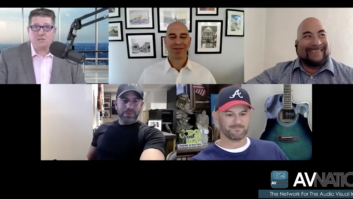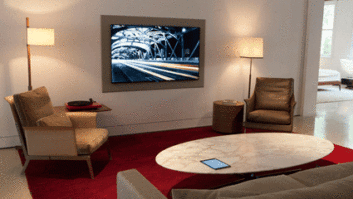In our social media age, big stories come and go. We’re bombarded with so much information every day, that last week’s news can sometimes seem like ancient history. So although “the day I learned that Crestron was no longer exhibiting at CEDIA” felt like the kind of earth-shattering moment you’d never forget, it’s already fading into the recesses of memory for most of us. Before we move on entirely, I wanted to review what we’ve learned.
Early last month the industry started to learn that Crestron–once the largest exhibitor (by square footage) on CEDIA trade show floor–had decided not to “execute its contract” for 2016 booth space. That’s when the conspiracy theories started. (Isn’t it interesting how “where were you when…” events so often lead to conspiracy theories?) The worst of these theories was that Crestron was punishing CEDIA for hiring its former VP Vin Bruno at CEO. Other theories contended that Crestron’s departure should be considered a bellwether for more defections to come.
The smoke cleared, however, when Crestron CEO Randy Klein took a rare step into the spotlight to state for the record that he believed that CEDIA (as a show, not as a trade association) simply no longer fit the goals of his company. He implied, reasonably, that he did not like sharing an event with companies that have mass-market, DIY aspirations, and he stated, inaccurately, that CEDIA restricted architects, builders, and interior designers from attending the show.
In his subsequent interviews, CEDIA’s CEO has attempted to turn the conversation away from controversy, emphasizing the association’s solid renewal numbers for exhibitors and refuting Klein’s claims of CEDIA’s exclusionary policy, even pointing to the show’s registration form that clearly allows for affiliated trades to register.
Klein said Crestron will continue to support CEDIA as an association and sell into the residential channel, revealing that this market accounts for “several hundred million dollars” of revenue and that the company has invested “millions and millions of dollars” in residential product development.
My opinion is that Klein truly believes that Crestron was unlike any other company on the CEDIA show floor. Rather than de-emphasizing the event by reducing its booth size on the show floor and maybe looking weak as a result, he chose the power move and just left. There’s a risk that this will backfire, of course, but I doubt Crestron will miss much by its absence. The company has plans for direct recruitment of dealers and outreach to affiliated trades through design centers in major cities around the world, and maybe even through its own event some day.
As for CEDIA, it’s an evolving association with inspired leadership from Bruno, who sees great potential in the smart home and CEDIA’s role within it. The more he shares his ambitious vision for the future of the association, the CEDIA show, and the industry as a whole, the more we can all work toward that the same goal, rather than dwelling on the past.




